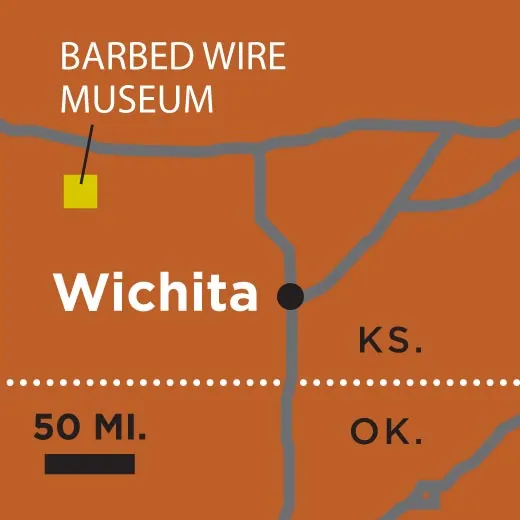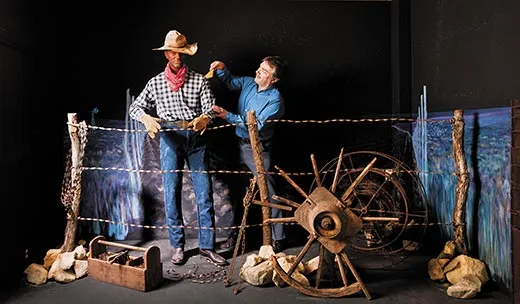The Kansas Barbed Wire Museum
With more than 2400 variations of barbed wire, this La Crosse, Kansas, museum has a lot to teach the non-farmers out there
/https://tf-cmsv2-smithsonianmag-media.s3.amazonaws.com/filer/odd-museums-Kansas-Barbed-Wire-Museum-631.jpg)
“Barbed wire was a lifesaver for this region,” says Brad Penka, president and curator of the Kansas Barbed Wire Museum, in La Crosse, Kansas. Let him count the ways: keeping animals, crops and vehicles apart and helping to make the treeless plains fencible and the United States a food exporter.
There are more than 2,400 variations of barbed wire. The first U.S. patent for a barbed fence attachment was issued in 1867. But it was not until 1874 that Joseph Farwell Glidden, a De Kalb, Illinois, farmer, patented a strand in which the barbs were held in place by twisted wire. Called “The Winner,” it would become the signature fencing of the American West.

